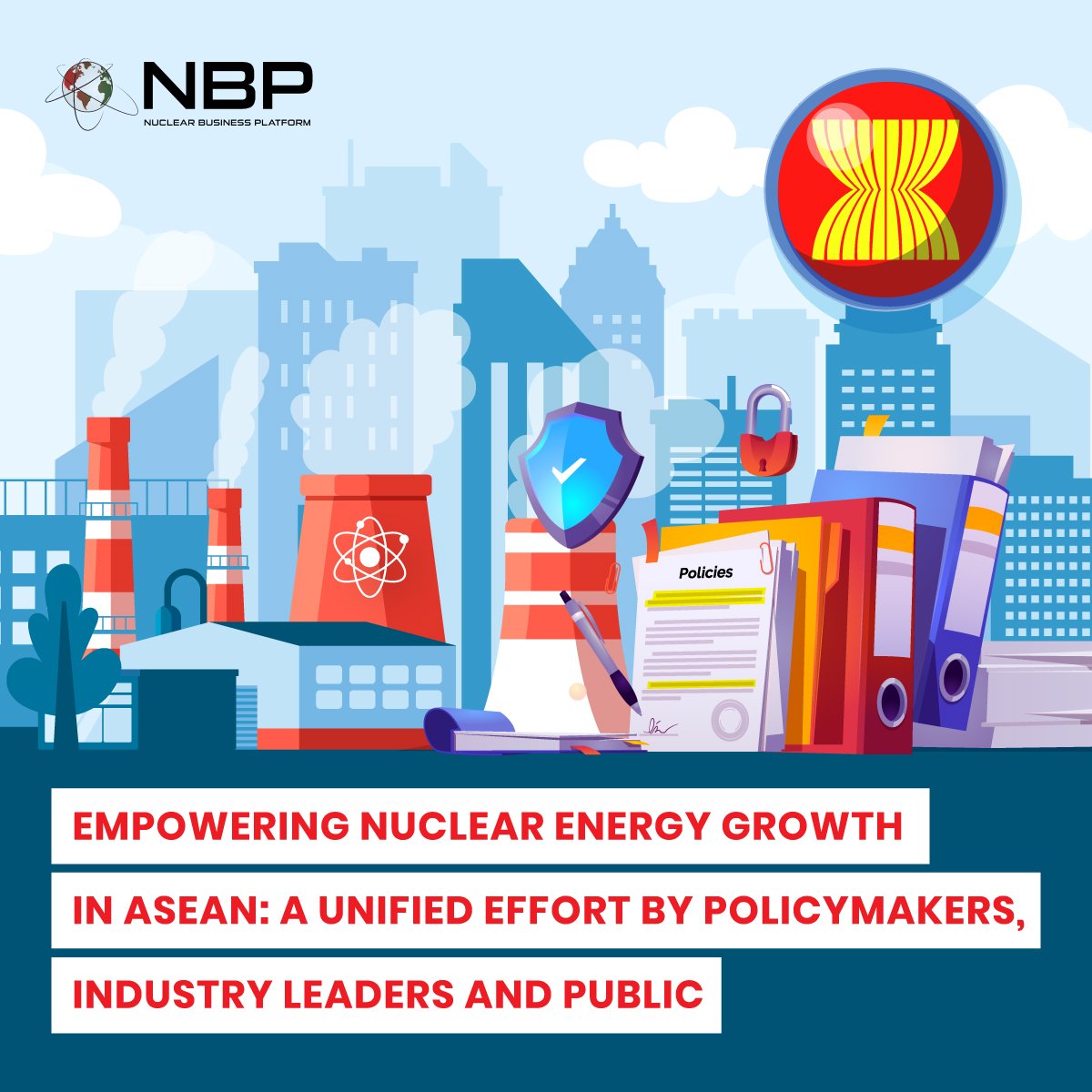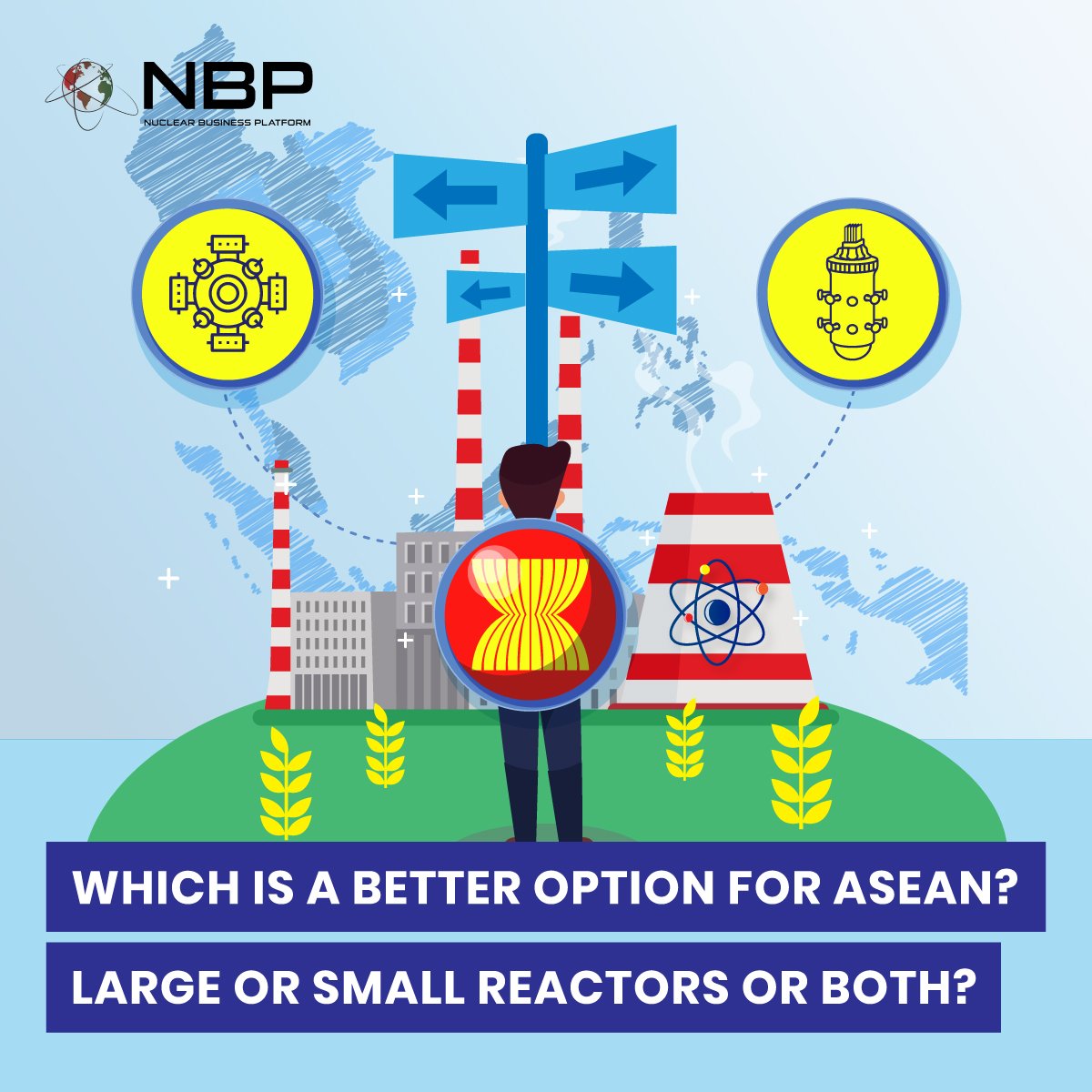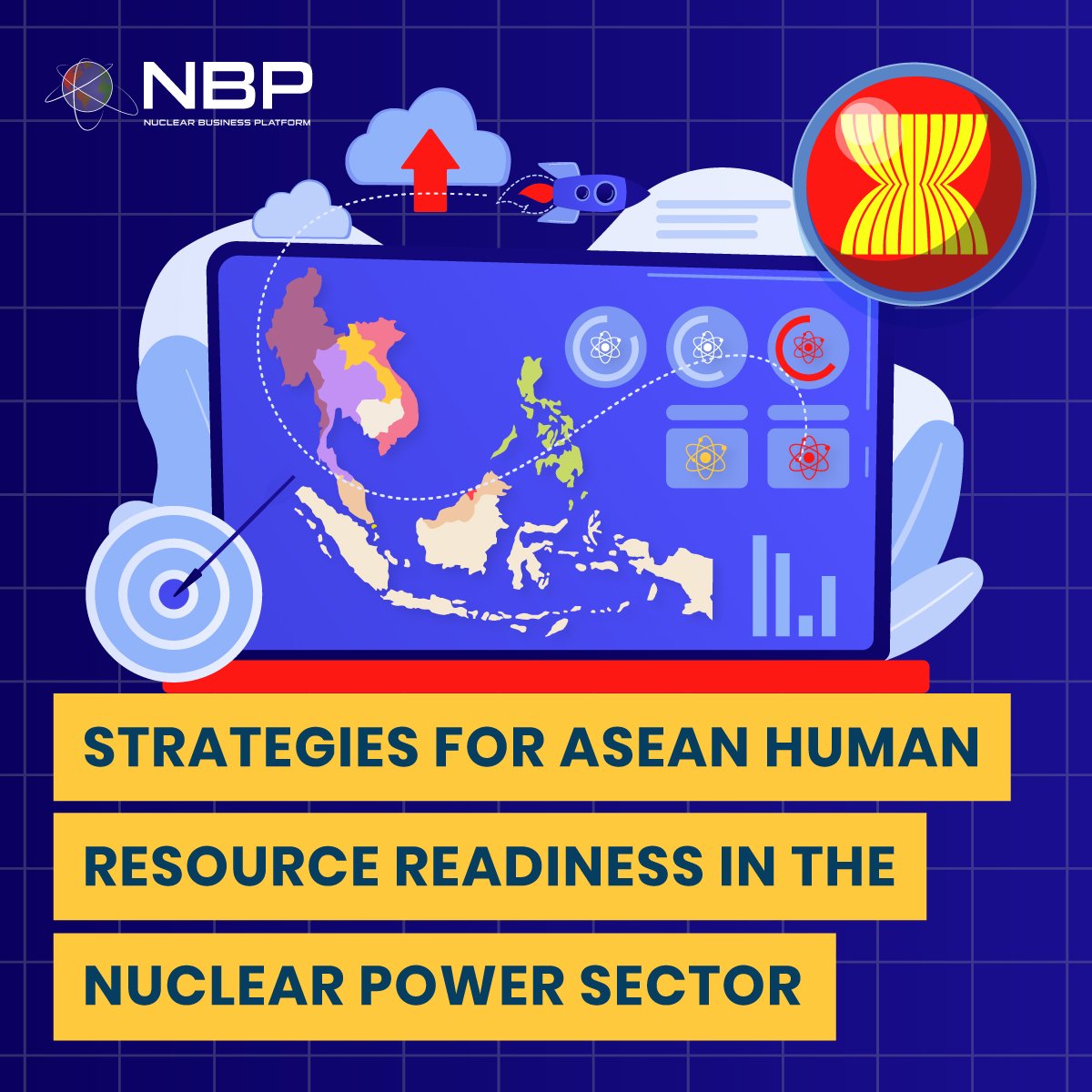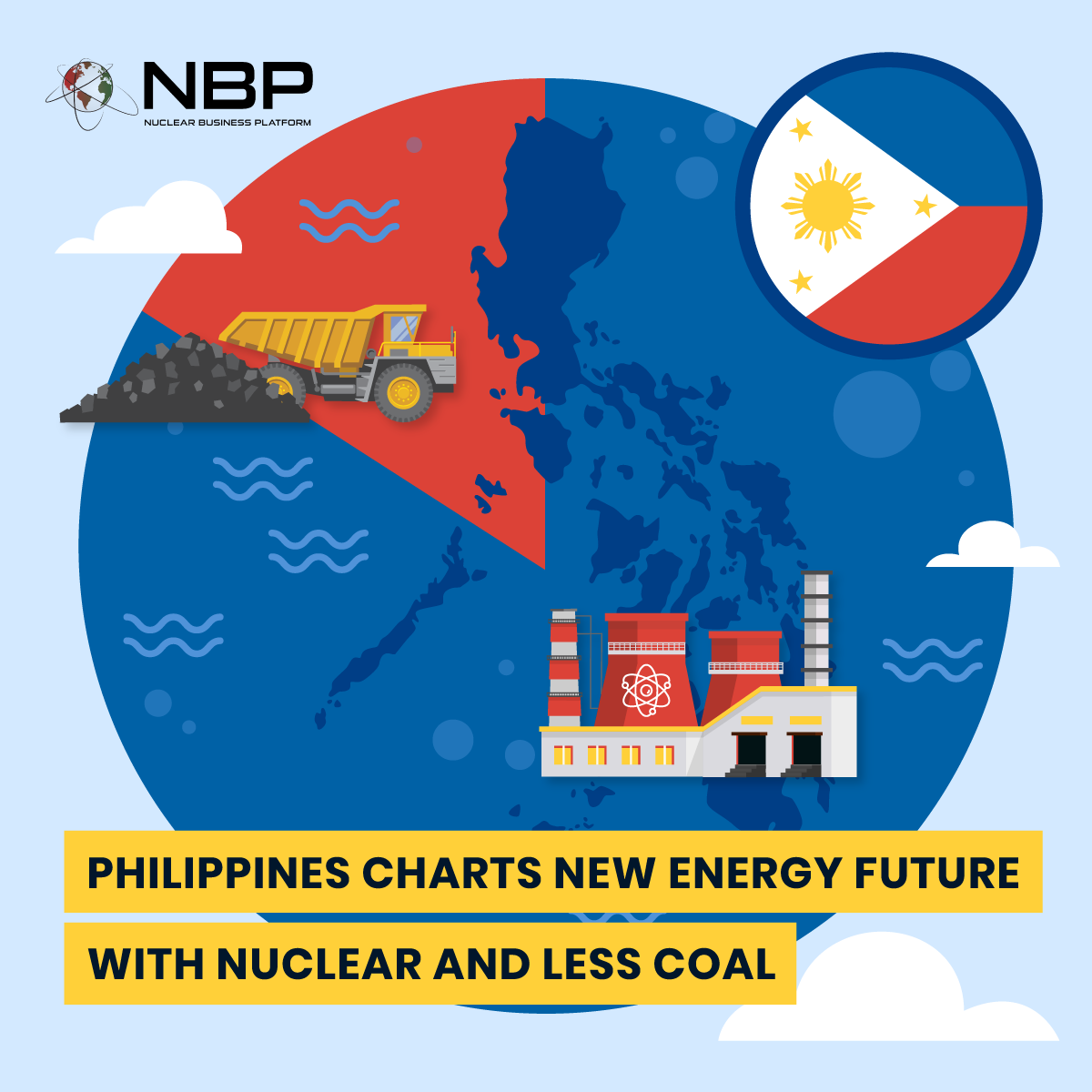NBP periodically publishes short articles on nuclear energy matters which either have a geographic or topical focus. Feel free to browse through all our articles and if you would like to read on something specific, please use the search function. For example, you can search for articles relating to Africa or India or financing or SMR etc. You can also use the filter function to see articles pertaining to Asia, Africa, India or Türkiye.

Empowering Nuclear Energy Growth in ASEAN: A Unified Effort by Policymakers, Industry Leaders and Public
As ASEAN nations grapple with the dual challenges of escalating energy demand and climate change, nuclear power has once again emerged as a viable solution. Over the past 15 years, energy demand in the region has surged by 60%, primarily met by imports of fossil fuels. While nuclear energy provides reliable, emissions-free electricity, it faces challenges such as high upfront costs, safety concerns, and waste management. Nevertheless, active nuclear programs in Indonesia and the Philippines, coupled with private sector interest, signal a potential nuclear future in the region. Collaboration among policymakers, industry stakeholders, and public support will be crucial in harnessing nuclear power's role in a sustainable ASEAN future.

Which is a better option for ASEAN? Large or Small reactors or both?
Southeast Asia is experiencing a surge in energy demand, having grown by 60% in the last 15 years. With over 40% of its energy imported and a significant reliance on non-renewables, the region faces a pressing need to balance its growing energy needs with supply security and environmental concerns. Nuclear power is being considered as a viable solution to meet the increasing electricity demand while reducing dependence on fossil fuels, given its low greenhouse gas emissions and ability to provide baseload power. However which nuclear reactor type is more suitable for ASEAN? Large or small?

Reviving Malaysia's Nuclear Energy Program
Malaysia has come a long way in developing its nuclear energy capabilities over the past decade. Though plans were put on hold in 2018, the nation made significant progress in building the infrastructure and expertise required for a nuclear power program. With the need to diversify energy sources and cut emissions, experts argue nuclear energy should be back on the table. Malaysia is well-positioned to revive its nuclear plans given its strong foundation. With the right strategy and conditions, nuclear could yet become part of Malaysia's energy mix as it strives to meet rising electricity demands and decarbonization goals.

Strategies for ASEAN Human Resource Readiness in the Nuclear Power Sector
As countries in the Association of Southeast Asian Nations (ASEAN), such as the Philippines and Indonesia, seek to meet their growing energy demands while reducing carbon emissions, nuclear power is emerging as a promising option. The development of a skilled workforce is a critical component of ensuring the safety and success of nuclear power programs.

Indonesia's Nuclear Energy Market: Open for Business - Regulator Prepares for Advanced Reactor Technologies
Indonesia is taking steps to streamline its licensing process with a focus on expediting nuclear power plant deployment and attracting investors. This move aligns with the nation's commitment to a sustainable and energy-secure future. Additionally, Indonesia's exploration of multinational pre-licensing for SMRs is a forward-looking initiative that could significantly reduce regulatory barriers and foster international cooperation in the nuclear energy sector.

Indonesia Opens Doors to More SMR Projects: Wants to Co-Develop SMR Technologies Which Are Still In Development Stage
SMRs are garnering attention as a promising solution to Indonesia's growing energy needs. By 2039, Indonesia aims to potentially deploy SMRs to significantly accelerate the transition to clean and sustainable energy sources. Indonesia's National Research and Innovation Agency (BRIN) is not only open to the idea of utilizing SMRs but also considering co-developing reactor designs for SMRs that are still in the development stage. This cooperative approach could fast-track Indonesia's SMR deployment timeline, showcasing the nation's commitment to innovation and sustainability.

Making Nuclear Power Accessible: Strategies to Increase Nuclear Energy Literacy Across Southeast Asia
Southeast Asian countries are looking to utilize nuclear energy in the coming years. Improving nuclear literacy will be crucial for building public acceptance of nuclear power across the region. With thoughtful communication, countries can dispel misconceptions, emphasize benefits, and gain citizens' support for deploying nuclear energy.

Philippines Charts New Energy Future with Nuclear and Less Coal
The Philippines, under the leadership of President Marcos, is undergoing significant changes in its energy landscape due to rising energy demands, costly electricity, and heavy dependence on coal imports. In response to these challenges, the Philippines is revising its energy roadmap to incorporate nuclear energy while simultaneously increasing its targets for renewable energy sources.

Indonesia's Utility Giant Aims for Green Future with SMR Plans in West Kalimantan
PT PLN is pursuing an energy transition and decarbonization strategy to achieve carbon neutrality by 2060. The utility giant plans to focus on nuclear and clean energy sources. PLN, BRIN and NuScale have established a Collaboration Agreement to conduct a Techno-Economic Assessment for the construction of SMR in West Kalimantan to support the region's power system.

Breaking Free from Coal: How SMR Technology Can Be a Solution in Securing ASEAN's Energy Independence
The ASEAN region heavily relies on fossil fuels, particularly coal, for power generation. The cumulative installed capacity of coal power plants in ASEAN stands at approximately 89.5 GW, accounting for roughly 31% of the region's total installed capacity. The advent of SMRs provide an opportunity for ASEAN economies to transition away from their coal addiction to clean source of energy, nuclear energy.

Indonesia Seeks International Support for Nuclear Power Program
Indonesia’s National Research and Innovation Agency (BRIN) is currently working on human resource development, technological capabilities and zoning as part of preparing a strategy for the development of nuclear power in Indonesia. BRIN has also emphasized on the need for involvement of foreign parties in the development of nuclear power in Indonesia.

Asia’ Rise As A Nuclear Titan
Asia's emergence as a nuclear powerhouse signals a transformative shift in the global energy landscape. The balance of power is shifting from West to East, with nuclear technology and energy production becoming increasingly centered in Asian nations. As Asian countries like China, India, and South Korea invest in cutting-edge technology, infrastructure, and human capital, they challenge the historical dominance of Western nuclear leadership.

Is Nuclear Power Singapore's Best Bet for Energy Independence?
Over 95% of Singapore's electricity currently comes from imported natural gas. Singapore has embarked on diversified energy strategies to decrease its dependence on fossil fuels and reduce greenhouse gas emissions. However the primary emphasis in the pursuit of clean energy has been on solar power. Perhaps the Lion City needs to seriously consider adopting nuclear energy if it aspires for energy independency.

Philippines Utility Giants Eye Nuclear Energy
The Philippines, as one of the fastest-growing economies in Southeast Asia, faces the challenge of ensuring reliable energy while balancing environmental concerns. Two major utility players, The Manila Electric Co. (Meralco) and Aboitiz Group, are at the forefront of these transformative efforts, both eyeing nuclear energy as part of their sustainability strategy.

ASEAN Nuclear Power Quest: A Reality For Philippines And Indonesia Soon?
Over the decades, the quest for nuclear power in Southeast Asia have a experienced many false-promises due to a myriad of reasons, often non-technology related but political. Recently Indonesia and the Philippines have demonstrated a renewed interest in harnessing this clean source of energy. How do these two countries match up and which of the two looks more likely to be the first member of the Southeast Asia Civil Nuclear Power club?

Utility Led Nuclear Power Projects: The Future In ASEAN?
Nuclear power programs in the ASEAN region has traditionally been led by governments. However in recent times, with the emergence of SMRs, utilities in ASEAN have started showing a keen interest in adopting nuclear energy.

Small in Scale, Big on Potential: SMRs Spark ASEAN's Nuclear Interest
Southeast Asian countries reviving interest in nuclear energy with the advent of small modular reactors (SMRs). SMRs present an appealing option for archipelagic countries like Indonesia and the Philippines in particular. The potential adoption of SMRs could mark a pivotal milestone for ASEAN countries as they work to achieve energy security and decarbonization goals.

US-Indonesia Partnership Igniting Indonesia's Nuclear Industry Development
In March 2023, the United States and Indonesia unveiled a strategic partnership to assist Indonesia in developing its nuclear energy program. This partnership promises transformative technological advancements, revolutionizing the industry with cutting-edge technology, expertise, and experience.
